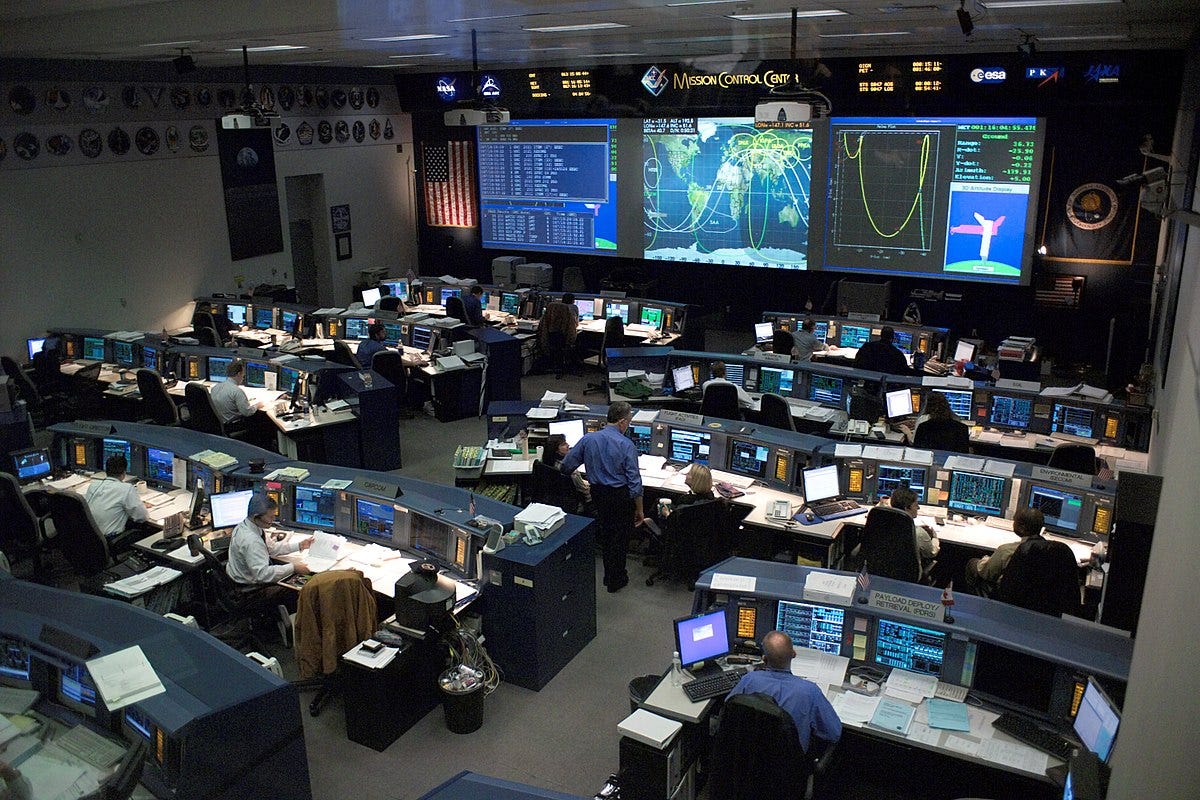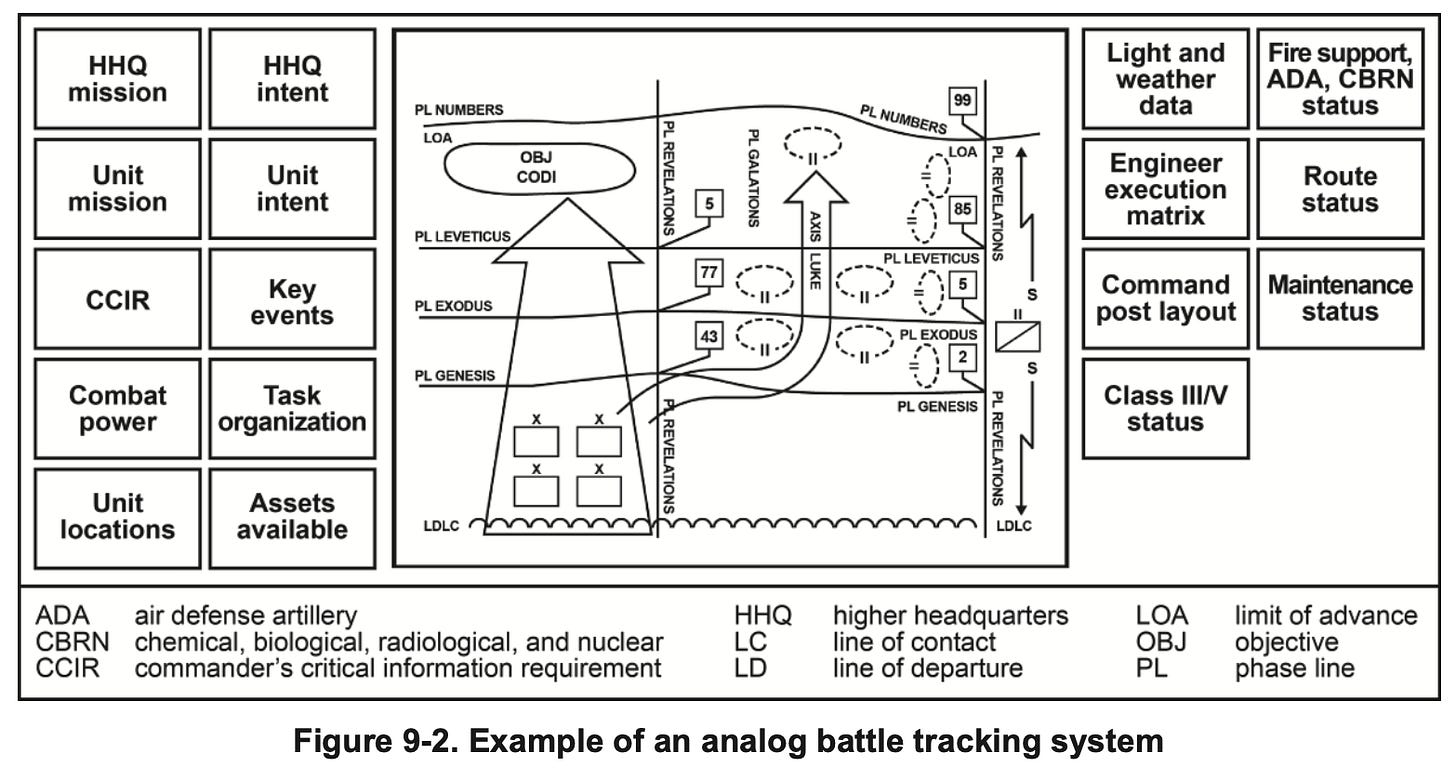Continuous Command Post Operations
Guided Discovery.

How do you manage continuous operations?
Suggested Reading
FM 6-0, Commander and Staff Organization and Operations
Pages 9-1 through 9-16 based on printed document (PDF pages 143-158)
Discussion of the processes and actions for effective and efficiency management of command posts
This week’s Study: Staff Duty
All excerpts below are from FM 6-0
Guided Discovery
War does not work bankers hours.
9-1. Army operations are continuous, and units operate at the same level of intensity for extended periods. Units and organizations must man, equip, and organize CPs to execute operations and sustain command and control (C2) without interruption.
Continuous management of the battlefield and all operations is paramount; small failures in oversight, attentiveness, and response times create larger margins for error or opportunities for enemy exploitation.
Plenty of companies have legitimate needs to run continuous operations: utilities, communications providers, emergency services, fuel stations and convenience stores come to mind.
Most other organizations do not have competitive sensitivities or community dependencies necessitating continuous operations, and yet expectations continue to increase for leaders and managers to be omnipresent and omniscient with respect to all activities.
Whether this is a real requirement or inflated expectation, the need exists for some form of continuous operational capability for leadership teams. Most organizations are not good at providing these capabilities.
It’s not for a lack of tools. Dashboards, alert systems, latent crisis teams waiting for activation - there are many digital products and on-demand services attempting to fill the capability gap.
Most organizations struggle less with gathering and compiling real time information and more with executing a systematic approach to triaging information flow, passing information to and between key roles, and making decisions quickly.
If you are going to manage continuous operations (and at one point or another we all will in some fashion), the US Army can provide you guidance. You should rigorously follow four areas of Command Post Operations instructions to most effectively manage continuous operations in your job or life:
Stick to SOPs
Get Three Roles Right
Structure Your Handoffs
Build a Battle Tracking System
All of it boils down to the creation of an environment that supports consistency and clarity in communication. It need not be complex, only consistent and clear.
How do you manage continuous operations?
Does the need for continuous operations exist in your organization or is there simply a desire for on-demand information?
Stick to Standard Operating Procedures (SOPs)
9-2. During continuous operations, CP personnel perform several routine and recurring tasks to establish, operate, and move CPs. With the assistance of their staffs, commanders develop processes and procedures for performing these tasks. The collective whole of those processes and procedures are encapsulated in SOPs to govern CP operations.
Everyone loves a good SOP. The look nice, written down, put in drawers or uploaded to a Teams site, never to be followed or reviewed. This is not a failure of SOPs, it is a failure of leaders to be involved in SOPs.
9-4. Commanders ensure that comprehensive and detailed SOPs are developed, maintained, trained upon, and used for all aspects of CP operations. In this way, CP operations become routine and are successfully executed in periods of stress and rapid tempo.
SOPs matter in continuous operations because consistency and clarity in communications matter. To build the environment and organizational muscles that support consistency and clarity in communications, use SOPs. It does not actually matter what they are. What matters is that a leader and team purposefully create a clean, uncluttered space for the execution of continuous operations (analog/physical or digital).
9-5. CP operations call for strict focus and discipline from all personnel. For this reason CPs establish SOPs that outline rules for maintaining good order and discipline. Posting these rules in a highly visible area in the CP is a technique that helps remind personnel of those rules. At a minimum, these rules should address—
CP cleanliness standards.
Noise, light, and litter discipline.
Proper weapon-handling procedures.
Proper uniform standards.
Conduct before, during, and after meetings.
Sensitive item control procedures.
Classified information handling procedures.
Daily maintenance requirements.
CP access controls such as badging, challenge, and password.
Personal electronic devices.
The US Army’s list of suggested Command Post SOPs, when defined for a specific unit, allow everyone in the organization or coming into contact with the organization’s command post to understand the behavioral norms of the space. Standardized behaviors and the habitual fulfillment of expected norms reinforces consistency in interactions. This is required for consistency in communications.
The purpose of SOPs is control - you want to make the environment predictable, even boring. A predictable, boring environment is calm, which improves clarity and understanding in communications.

The above is a controlled, boring space, full of SOPs, that engages in exciting activities.
What responsibility do leaders have for engaging in the development and adherence to SOPs?
When should leaders ignore established SOPs to serve the mission?
Get Three Roles Right
Triaging information flow and making sure the appropriate audiences address information in a timely fashion is difficult because in stressful, continuous operations, it is terrifying to think we might be the one who dismisses critical information or prevents a leader from receiving that one particular data point that allows the to make the perfect decision.
It’s human nature to pass things along, even if what we pass on is excessive. Better safe than sorry?
Three roles (or sets of responsibility) should be established on any team required to deliver true continuous operations.
The first is the role of ‘battle captain’.
9-11. Units use the term battle captain to identify the shift officer in charge in a CP. Units associate the term with position, not rank. The battle captain assists the commander by being the focal point in the CP for communications, coordination, and information management.
The battle captain is the leader of the command post and the person responsible for information triage.
9-13. The battle captain ensures that relevant information is given to decision makers. The battle captain works closely with all members of the command group and the staff. The battle captain ensures that those staffs continuously update unit status. The battle captain analyzes new information as it enters the CP and passes it to the appropriate staff officers or the commander. The battle captain knows the commander’s critical information requirements and understands the criteria and triggers for the commander’s decision points. The battle captain knows the scheme of maneuver and ways the unit integrates warfighting functions into operations.
The battle captain understands the prioritization and criticality of different types of data, accepting the burden of filtering and redistributing information so that every other member of the command post does not need to try to do the same.
In true continuous operations there is always a battle captain on shift, but there are never two battle captains on shift.
Should battle captains exist in corporations or does this create single points of failure?
How do you prevent information overload from masquerading as situational awareness?
What leadership behaviors would make a battle captain
The second role is that of the ‘Common Operational Picture (COP) Manager’.
9-18. An effective technique for managing the COP in the CP involves designating a COP manager. The COP manager has a high degree of attention to detail, experience working with C2 systems and CPs, computer skills, intelligence expertise, and specific knowledge. This knowledge includes relevant doctrinal publications such as ADP 5-0 and ADP 6-0. The COP manager works for the battle captain. The COP manager’s duties include, but are not limited to—
Being responsible for all information displayed as the COP.
Updating unit locations and events through the digital component of the COP.
Updating unit locations and events on the analog COP.
Coordinating with other staff sections for COP manipulation during briefings.
Receiving guidance from the command group on specific views or manipulations of the COP for situational understanding purposes.
Ensuring redundancy with analog COP or battle tracking.
Not a sexy role but a critical one, the COP manager is responsible for the creation and maintenance of the single version of truth for everyone else in the command post: the common operational picture.
9-49. In a CP, the COP is the end product of knowledge and information activities, running estimates, and battle tracking. It is designed around the commander’s requirements, is based on shared information, and facilitates collaborative planning and the achievement of situational understanding.
9-50. Although the COP is ideally a single display in the CP, it may include more than one display and information in other forms, such as graphical representations or written reports. Commanders achieve situational understanding by applying judgment to the COP.
It is entirely possible to make a COP much more complex than it needs to be. It is entirely possible to fill a COP with information that feels good to display but is irrelevant to decision making. The COP manager must be the ruthless arbiter of relevancy, working with the battle captain to ensure that the common visualization of the situation is practical and decision oriented.
Request for Information Manager
The third role is that of the ‘Request for Information Manager’. Leaders ask a lot of questions. Many people try to answer the questions. Sometimes the same questions get repeated. Sometimes people provide conflicting answers. Occasionally the questions are critical. Often they consume tremendous effort.
9-19. Units are not typically manned for a request for information (RFI) manager; however, commanders should identify one to aid in conducting effective CP operations. This individual is usually in the current operations cell and has responsibility for managing RFIs. The RFI manager serves as a single point of contact for incoming and outgoing RFIs. This manager consolidates RFIs generated from the unit CP and its subordinate elements and distributes them to the appropriate element for answers. The RFI manager works directly for the battle captain. Primary responsibilities of the RFI manager are to—
Track and maintain RFIs on some type of tracker. All RFIs include a suspense date for return to the RFI manager.
Capture command group RFIs and produce appropriate RFI slides to brief at a daily plans update briefing for battle rhythm meetings.
Brief the battle captain on any critical or short-suspense RFIs received.
Close out all RFI actions on the tracking log.
Track your RFIs. This is a helpful responsibility to create even if you have no need for continuous operations.
Do you track RFIs? How would an organized approach improve communications?
How should an organization manage its common operational picture? Is this a priority or a nice-to-have?
Structure Your Handoffs
In a command post, the most critical handoff, happening multiple times daily, is shift change. If you have ever managed shift-based production or operations you appreciate the importance of shifts sharing information and building continuity through well structured shift changes.
9-35. To ensure uninterrupted operations and shared understanding, staffs conduct a briefing when the shifts change. The shift-change briefing provides a mechanism to exchange information periodically among CP staff members. Depending on the situation, it may be formal or informal, and it may include the entire staff or selected staff members. Key CP leaders normally meet face-to-face.
To create consistency and clarity in communication, it is critical that information and operations flow through a 24-hour cycle versus getting trapped in a shift. What good is an important but un-actioned realization at 10AM if you forget to tell the next shift (when the realization may become actionable)?
Most organizations, designed for discrete workdays, trust that the same people will arrive the next day. Whether they shared information is irrelevant, they will be there. In continuous operations, seamlessness is derived from handoffs. It is not enough to assume that an information repository will provide continuity; shift changes allow humans to build off counterparts decision logic and intuition to carry activities forward in a consistent manner.
Where in your organization would the use of organized handoffs improve communications consistency and clarity?
How do you maintain strategic vision while managing operational minutiae?
Build a Battle Tracking System
9-39. Success in CP operations demands timely and effective decisions based on applying judgment to available information and knowledge. A common function of all CPs is to build and maintain situational understanding. Conducting knowledge and information activities, such as maintaining running estimates, performing focused battle tracking, and managing the COP, enables staffs to provide knowledge to commanders.
There are a number of elements to the COP, but a battle tracking system, the visual core of the COP, is the most important.
Examine the example provided by the US Army. It is simple, yet contains all of the information a commander might ask subordinates about. On the left hand side, it lists mission and intent, in written form, so people are continually aware of the goals (and when the goals change!).
9-45. Battle tracking adds meaning to relevant information by formatting, plotting, translating, correlating, aggregating, organizing, categorizing, analyzing, and evaluating it to create the COP. Successful battle tracking underpins building and maintaining situational understanding. CPs employ both analog and digital battle tracking.
More organizations need battle tracking. Executive meetings and status dashboards partially fill the gap, but in a military command post, the entire staff is typically sitting at desks facing the battle tracker. The commander can walk from their office and look at the tracker at any point with an ability to ask a question of a relevant expert, sitting there, if anything appears amiss.
In a decentralized digital world, the in-person wall might be impractical, but the concept is not (and if you can make a wall for battle tracking, you should).
How do you manage continuous operations?
Questions for Individual Reflection
When does standardization become a liability in changing business environments?
How do you balance continuous operations with human sustainability?
What's the true cost of 24/7 connectivity expectations on leadership effectiveness? Is there a more realistic expectation?
When does delegation of authority become abdication of responsibility?
Is real-time information sharing always beneficial or can it impair decision-making?
Professional Discussion Prompts
How does your organization handle tension between standardized processes and innovation?
What role should shift-based leadership play in global corporations?
How do you balance information security concerns with operational efficiency in your business? Is there anything that cannot be shared?
How do you ensure critical decisions aren't delayed by committee structures?
What happens when your command post structure conflicts with mission requirements?
Personal Discussion Prompts
How do you maintain personal relationships while managing continuous operational demands?
How do you handle being constantly "on call" for your organization?
What personal rituals help you transition between high-intensity work periods?
How do you maintain your identity outside of your professional role?
Exercises
Continuous Operations Costs
Exercise:
Participants calculate the true cost (financial, human, opportunity) of their organization's "always-on" expectations.
Share examples of when continuous availability added value versus when it was performative.
Explore what gets sacrificed for the illusion of constant readiness.
Debrief:
What would you stop doing if continuous operations were not expected?
How do you distinguish between necessary responsiveness and cultural theater?
The Standardization Spectrum
Exercise:
Each person identifies one process in their organization they would standardize more and one they would standardize less.
Explain the reasoning and trade-offs for each choice.
Discuss where innovation and efficiency naturally conflict.
Debrief:
What personal biases influence your comfort with standardization versus flexibility?
How do you recognize when a standard has outlived its usefulness?
Feel free to borrow this with pride and use with your teams, professionally or personally. If you do, please let me know how it went and tips for improvement: matt @ borrowingwithpride.com

